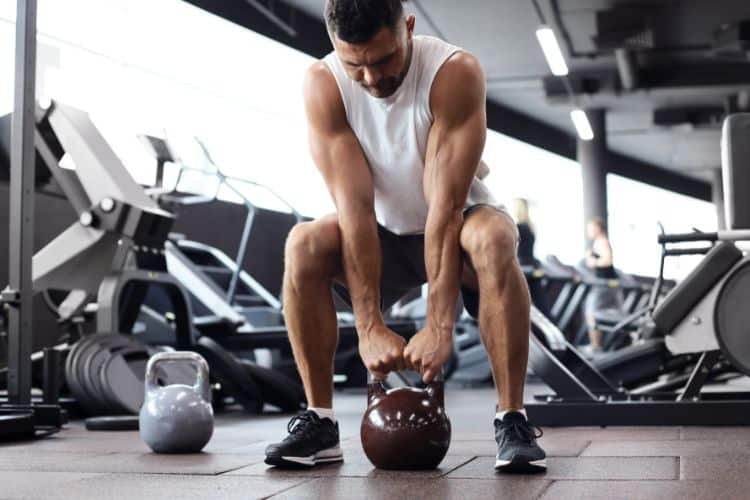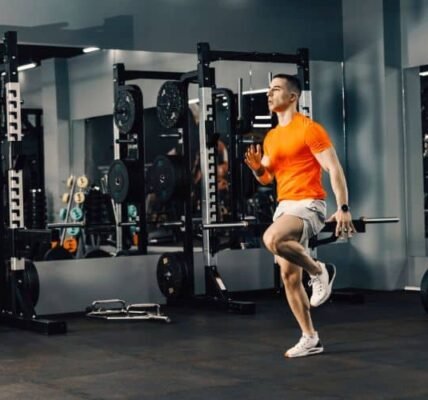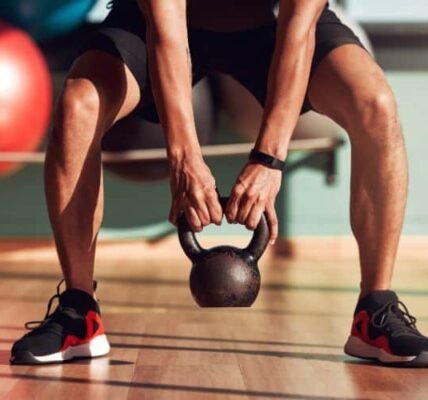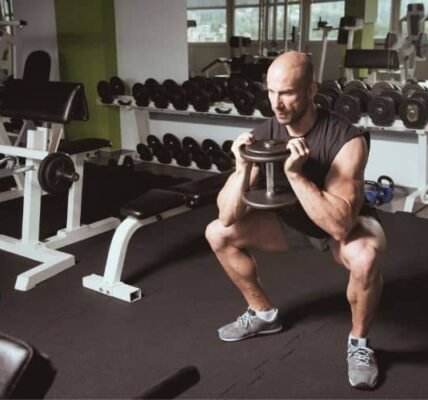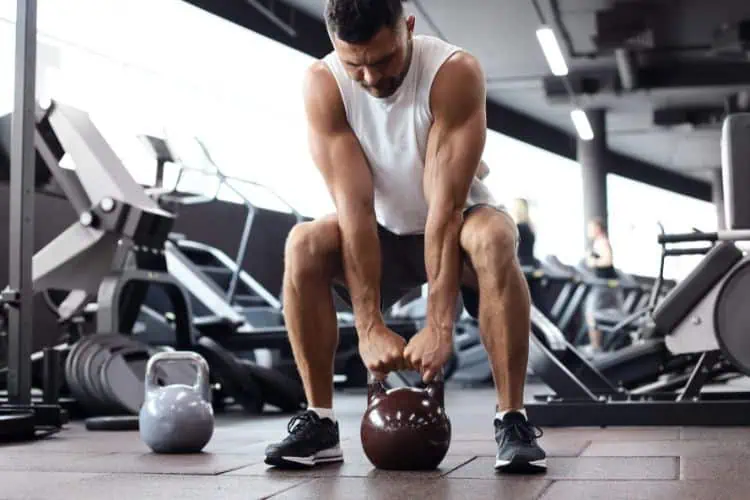
Kettlebell deadlifts are one of the most functional and efficient movements in the world of strength training. Whether you’re a beginner looking to develop a strong foundation or a seasoned lifter aiming to enhance your posterior chain, kettlebell deadlifts can play a pivotal role in your fitness journey. This comprehensive guide will walk you through everything you need to know about kettlebell deadlift workouts—including variations, benefits, form tips, and a sample training plan.
What Is a Kettlebell Deadlift?
A kettlebell deadlift is a hinge-based strength exercise that primarily targets the glutes, hamstrings, lower back, and core. Instead of lifting a barbell, this movement uses one or two kettlebells, making it an excellent choice for home workouts or functional fitness routines.
The kettlebell deadlift mimics the movement pattern of picking something heavy off the floor, which makes it not only effective for building muscle and strength but also incredibly practical for real-life movements.
Benefits of Kettlebell Deadlifts
1. Builds Full-Body Strength
Kettlebell deadlifts engage major muscle groups like the glutes, hamstrings, quads, core, and lats. By performing them consistently, you develop both upper and lower body strength.
2. Enhances Functional Fitness
This movement is grounded in real-life mechanics. Whether you’re lifting groceries or picking up your child, the KD improves your ability to move safely and efficiently in daily life.
3. Improves Posture
Many people suffer from poor posture due to sedentary lifestyles. KD strengthen the posterior chain and core, which help support the spine and promote better posture.
4. Great for Beginners
Unlike barbell deadlifts, kettlebell deadlifts are more forgiving and easier to learn. They offer a smoother entry into strength training without the intimidation of heavy iron.
5. Boosts Metabolic Rate
Kettlebell deadlifts are a compound movement, meaning they involve multiple joints and muscle groups. This not only builds strength but also boosts your metabolism, making it ideal for fat loss programs.
Muscles Worked in Kettlebell Deadlifts
Kettlebell deadlifts primarily work the posterior chain, but they also involve several stabilizer muscles. Here’s a breakdown:
- Glutes – The primary movers in hip extension.
- Hamstrings – Work to flex the knee and assist the glutes in hip extension.
- Erector Spinae – Help maintain a neutral spine throughout the lift.
- Core – Engaged to stabilize the spine and pelvis.
- Lats – Keep the kettlebell close to your body and support the upper back.
- Forearms and grip – Strengthen from holding the kettlebell(s).
How to Do a Basic Kettlebell Deadlift
Before jumping into variations and workouts, mastering the basic form is crucial.
Step-by-Step Instructions
- Setup
Place a kettlebell on the floor between your feet. Stand with your feet about hip-width apart, toes slightly pointed out. - Hinge at the hips
Push your hips back, not down. Keep your chest lifted and spine neutral. Reach for the kettlebell with both hands. - Grip and brace
Grab the kettlebell handle, engage your lats by pulling your shoulders back and down, and brace your core tightly. - Lift
Push through your heels, extend your hips, and stand up straight while holding the kettlebell close to your body. - Lockout
At the top, your body should form a straight line. Squeeze your glutes and avoid leaning back. - Lower under control
Hinge at the hips again, maintaining control as you return the kettlebell to the ground.
Common Kettlebell Deadlift Mistakes to Avoid
Rounding the Back
A rounded spine increases the risk of injury. Always maintain a neutral spine and keep your core braced throughout the lift.
Squatting Instead of Hinging
This is a hip hinge movement, not a squat. Practice by standing a foot from a wall and pushing your hips back until they touch the wall without bending the knees too much.
Letting the Kettlebell Drift Forward
The kettlebell should remain close to your body. If it drifts forward, you’re placing unnecessary stress on your lower back.
Kettlebell Deadlift Variations
1. Sumo Kettlebell Deadlift
- How to: Stand with your feet wider than shoulder-width and toes pointed out. Grab the kettlebell with both hands.
- Benefits: Targets inner thighs, glutes, and provides a wider base of support.
2. Single-Arm KD
- How to: Use one hand to lift the kettlebell while maintaining square shoulders and hips.
- Benefits: Builds unilateral strength and improves anti-rotational core stability.
3. Double KD
- How to: Use two kettlebells—one in each hand, positioned on the outside of your feet.
- Benefits: Increases the load and stimulates more overall muscle growth.
4. Kettlebell Romanian Deadlift (RDL)
- How to: Begin standing while holding the kettlebell. Hinge at the hips and lower it down your legs without touching the ground.
- Benefits: Enhances hamstring and glute activation with continuous tension.
5. Kettlebell Suitcase Deadlift
- How to: Hold a kettlebell in one hand, like a suitcase, and perform a deadlift.
- Benefits: Strengthens the obliques and improves grip and balance.
6. Kettlebell Staggered-Stance Deadlift
- How to: Place one foot slightly behind the other (like a kickstand), then perform the deadlift.
- Benefits: Adds unilateral focus and increases hamstring engagement on the lead leg.
Sample Kettlebell Deadlift Workouts
Beginner Kettlebell Deadlift Workout
Goal: Build foundational strength and improve form.
Warm-Up (3 rounds):
- Hip circles – 10 reps each side
- Glute bridges – 15 reps
- Bodyweight good mornings – 10 reps
Main Workout (3 rounds):
- Kettlebell Deadlift – 12 reps
- Goblet Squat – 10 reps
- Kettlebell Romanian Deadlift – 10 reps
- Plank – 30 seconds
Intermediate Kettlebell Deadlift Workout
Goal: Increase strength and unilateral control.
Warm-Up (3 rounds):
- Bird-dogs – 10 per side
- Glute bridges with march – 10 per side
- Wall hip hinge – 10 reps
Main Workout (4 rounds):
- Double Kettlebell Deadlift – 10 reps
- Single-Arm Deadlift – 8 reps per side
- Suitcase Deadlift – 6 reps per side
- Russian Swings – 15 reps
Advanced Kettlebell Deadlift Circuit
Goal: Maximize power, strength, and muscular endurance.
Warm-Up (3 rounds):
- Jumping jacks – 30 seconds
- Kettlebell halos – 10 reps
- High knees – 30 seconds
Circuit (4 rounds, minimal rest):
- Sumo Kettlebell Deadlift – 12 reps
- Double KB Romanian Deadlift – 10 reps
- Kettlebell Clean – 6 reps per side
- Staggered-Stance Deadlift – 8 reps per side
- Plank Row – 10 reps per side
Programming Kettlebell Deadlifts into Your Routine
You can program KD 2–3 times per week depending on your training goals:
- For strength: Use heavier kettlebells, lower reps (5–8), and longer rest (60–90 seconds).
- For endurance: Use lighter kettlebells, higher reps (10–15), and short rest periods (30–45 seconds).
- For hypertrophy: Moderate to heavy weight, 8–12 reps, 3–4 sets with 60–75 seconds rest.
Tips for Progressing Your Kettlebell Deadlifts
- Increase the load gradually – When a weight becomes too easy, move up by 2kg or 4kg increments.
- Try new variations – Switch up the movement to challenge different muscle groups and angles.
- Focus on tempo – Try slow eccentrics (lowering phases) to increase time under tension.
- Use supersets – Combine deadlifts with core or upper body work to maximize efficiency.
- Track your progress – Log sets, reps, and weight to monitor your strength gains over time.
Safety Considerations and Equipment
- Use proper footwear: Flat shoes or barefoot training improves stability.
- Train on a flat surface: Ensure your environment is stable to avoid slipping.
- Start with lighter kettlebells: Focus on technique before adding weight.
- Use chalk if needed: Helps with grip when performing higher reps or longer sets.
Kettlebell Deadlift Workouts
Kettlebell deadlifts are a powerhouse exercise for anyone looking to boost strength, improve posture, and gain real-world functional fitness. Whether you’re using them as part of your leg day, full-body routine, or conditioning circuit, the versatility and scalability of this movement make it a must-have in any training program.
From foundational deadlifts to dynamic single-arm variations, the kettlebell unlocks unique training opportunities you won’t get with a barbell. With consistency and attention to form, KD can reshape your body, fortify your core, and supercharge your athletic performance.

